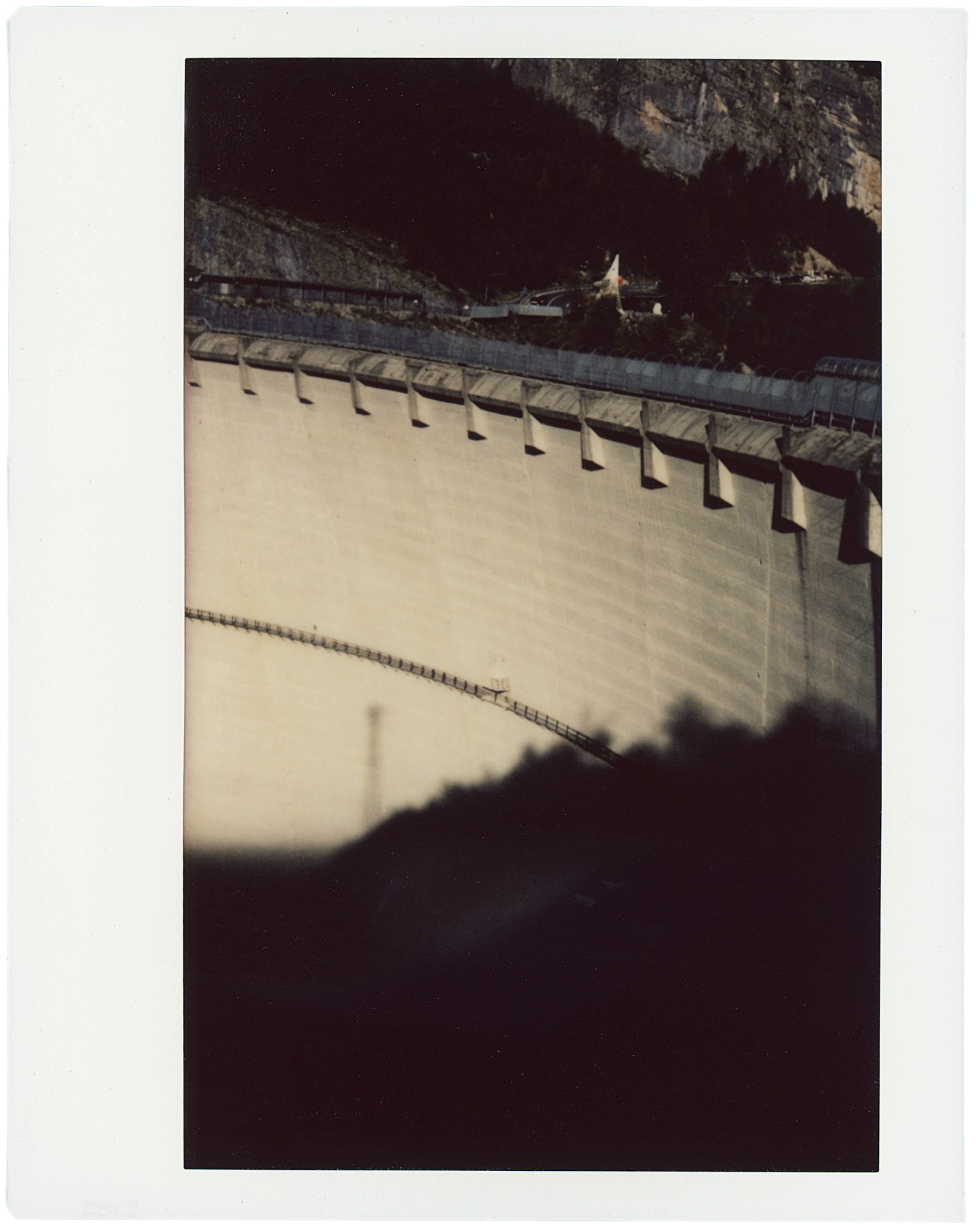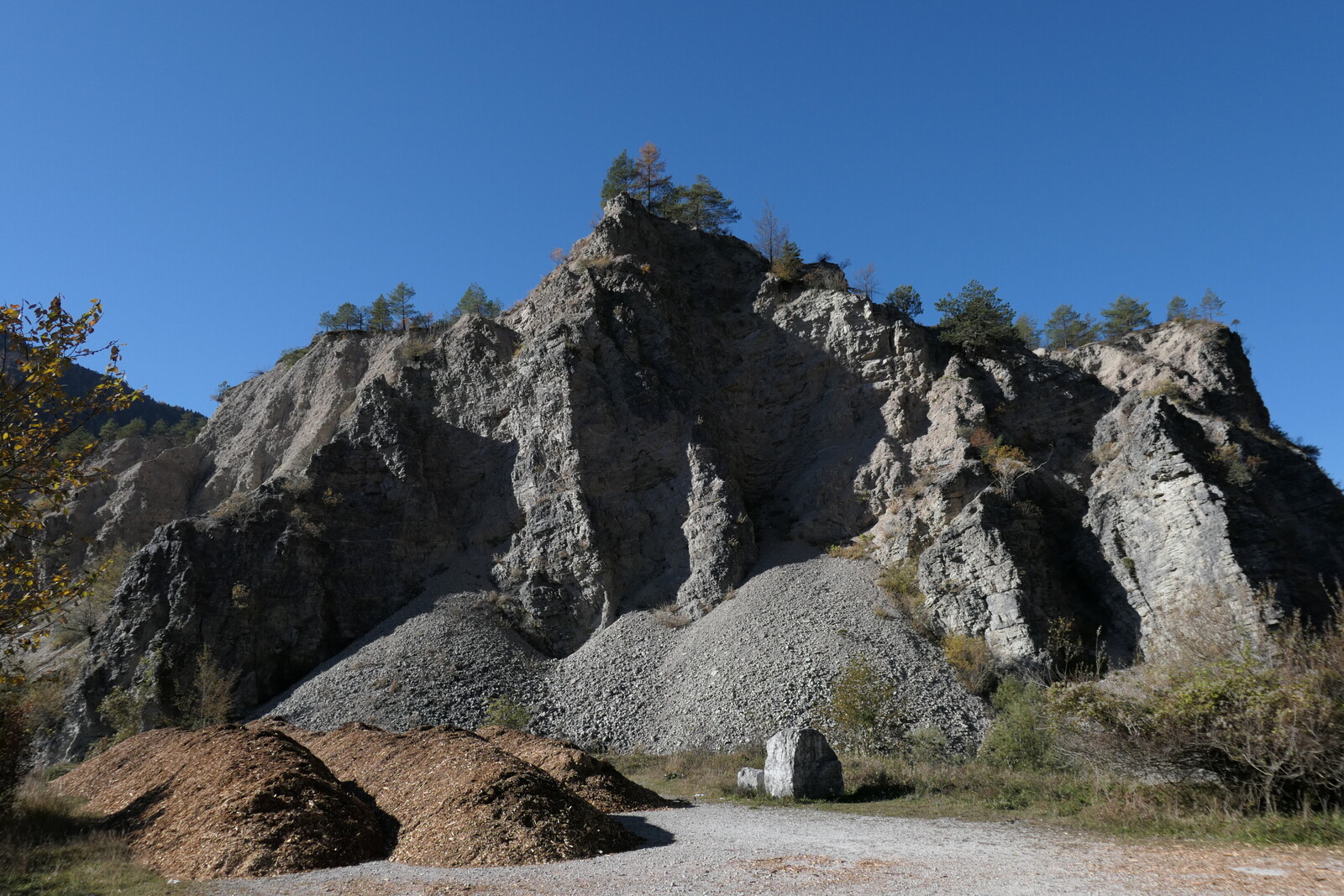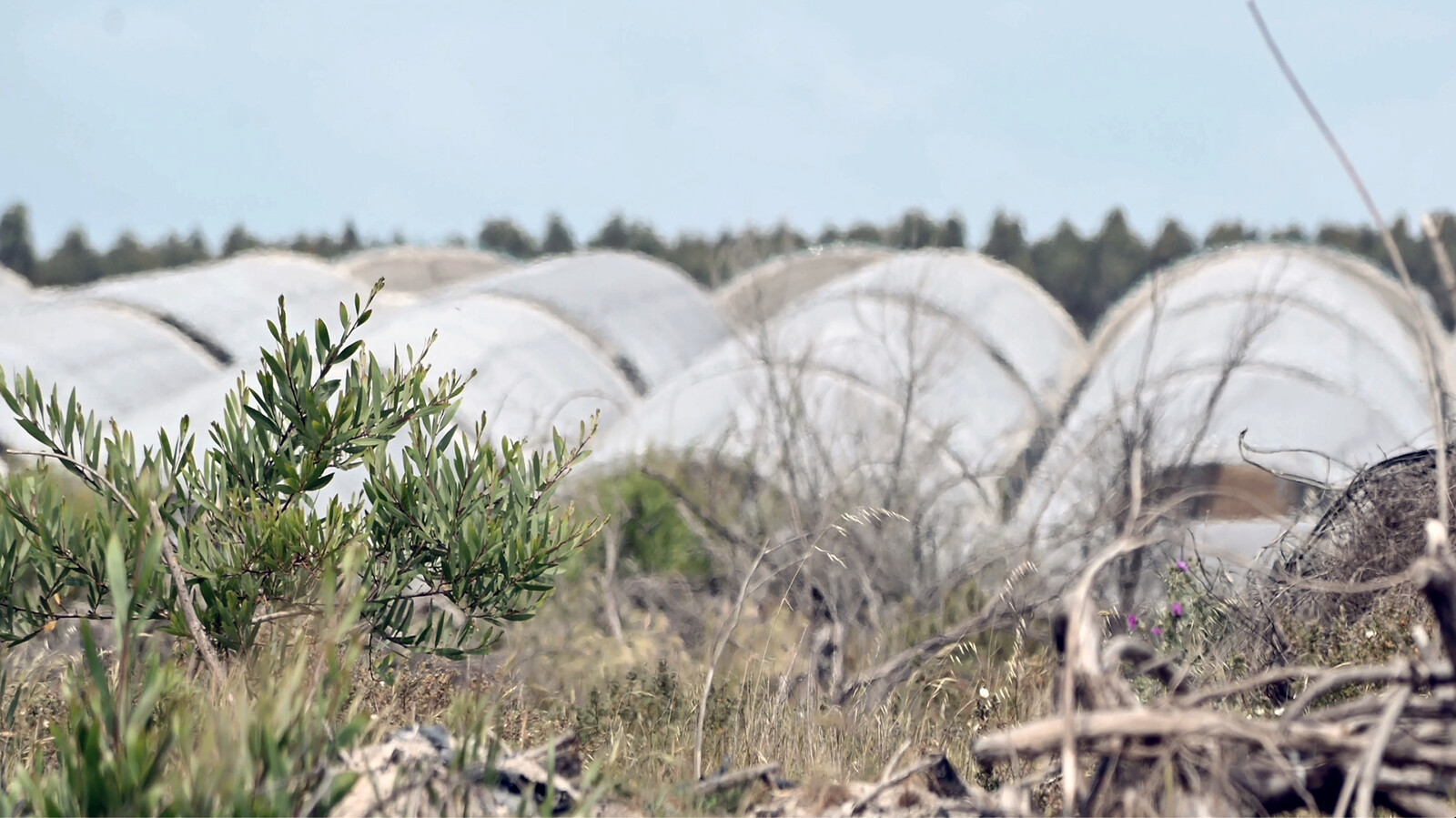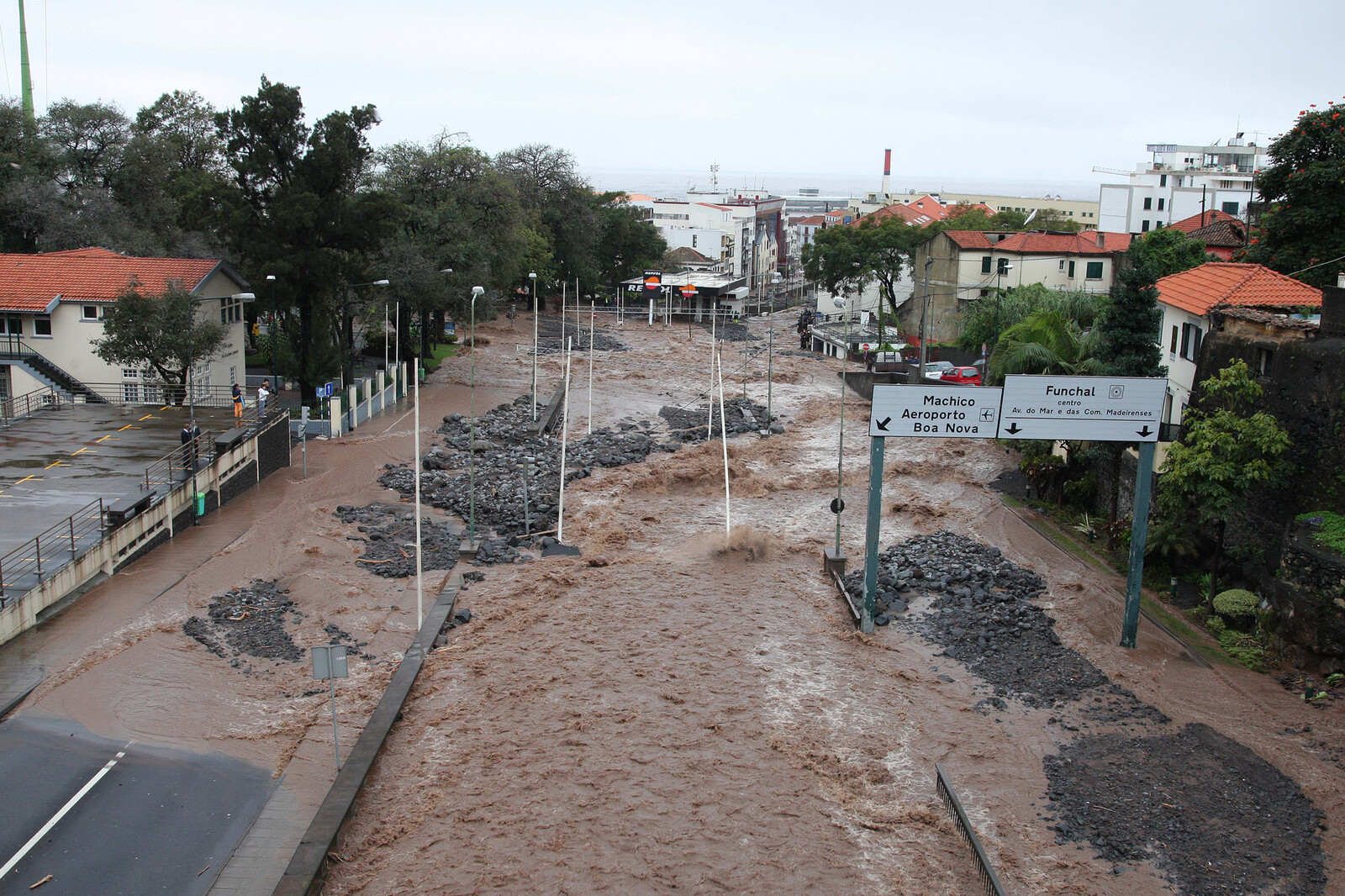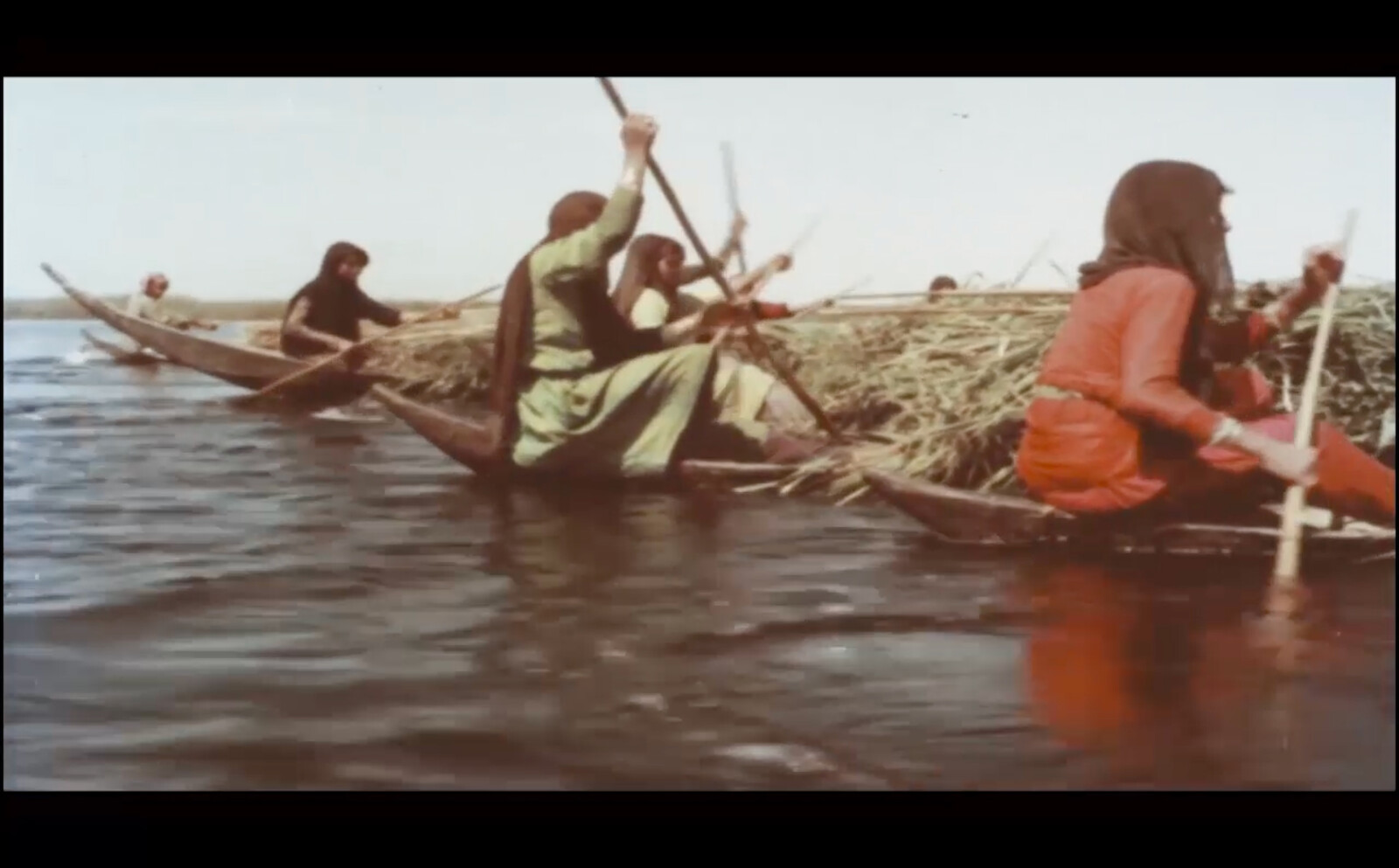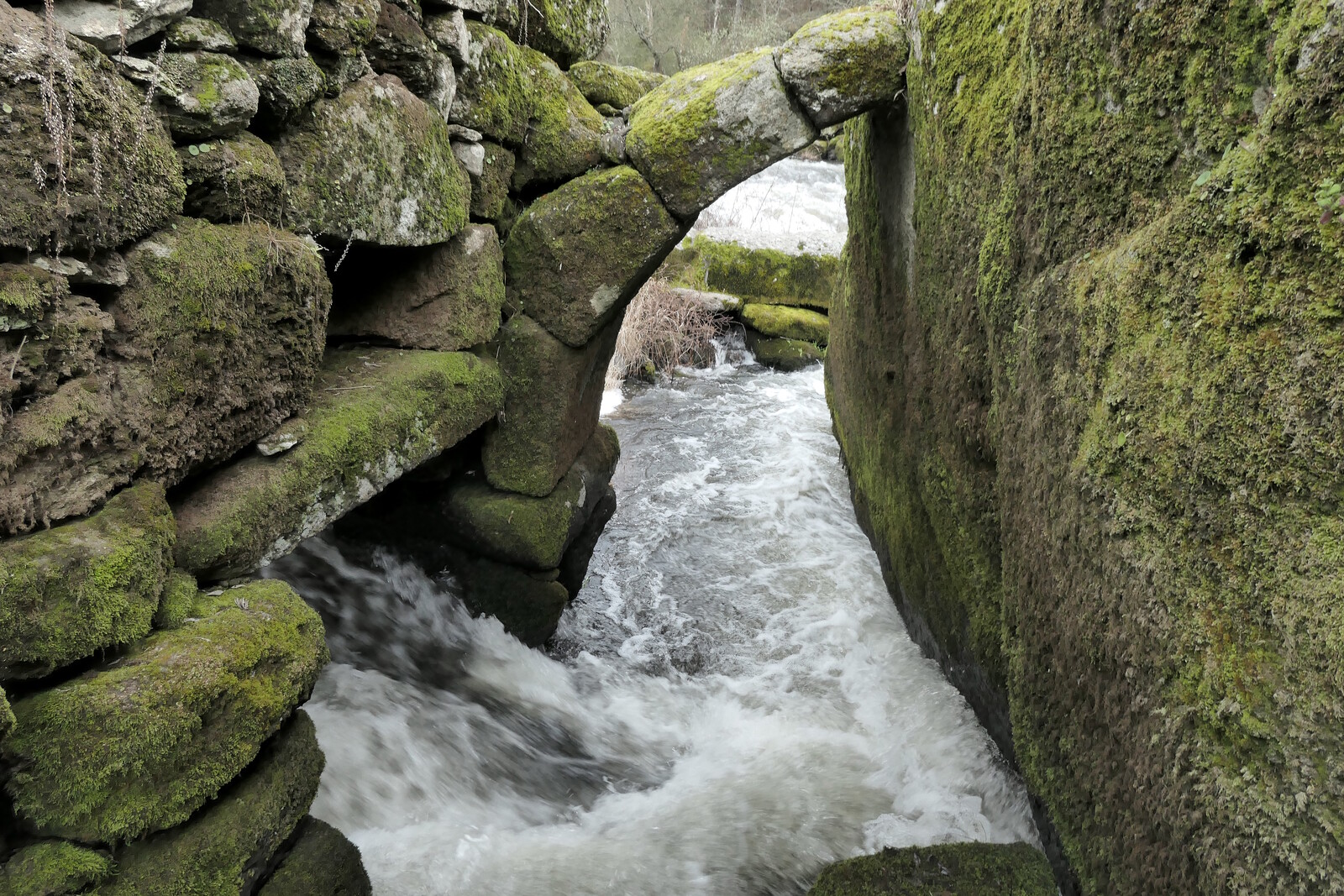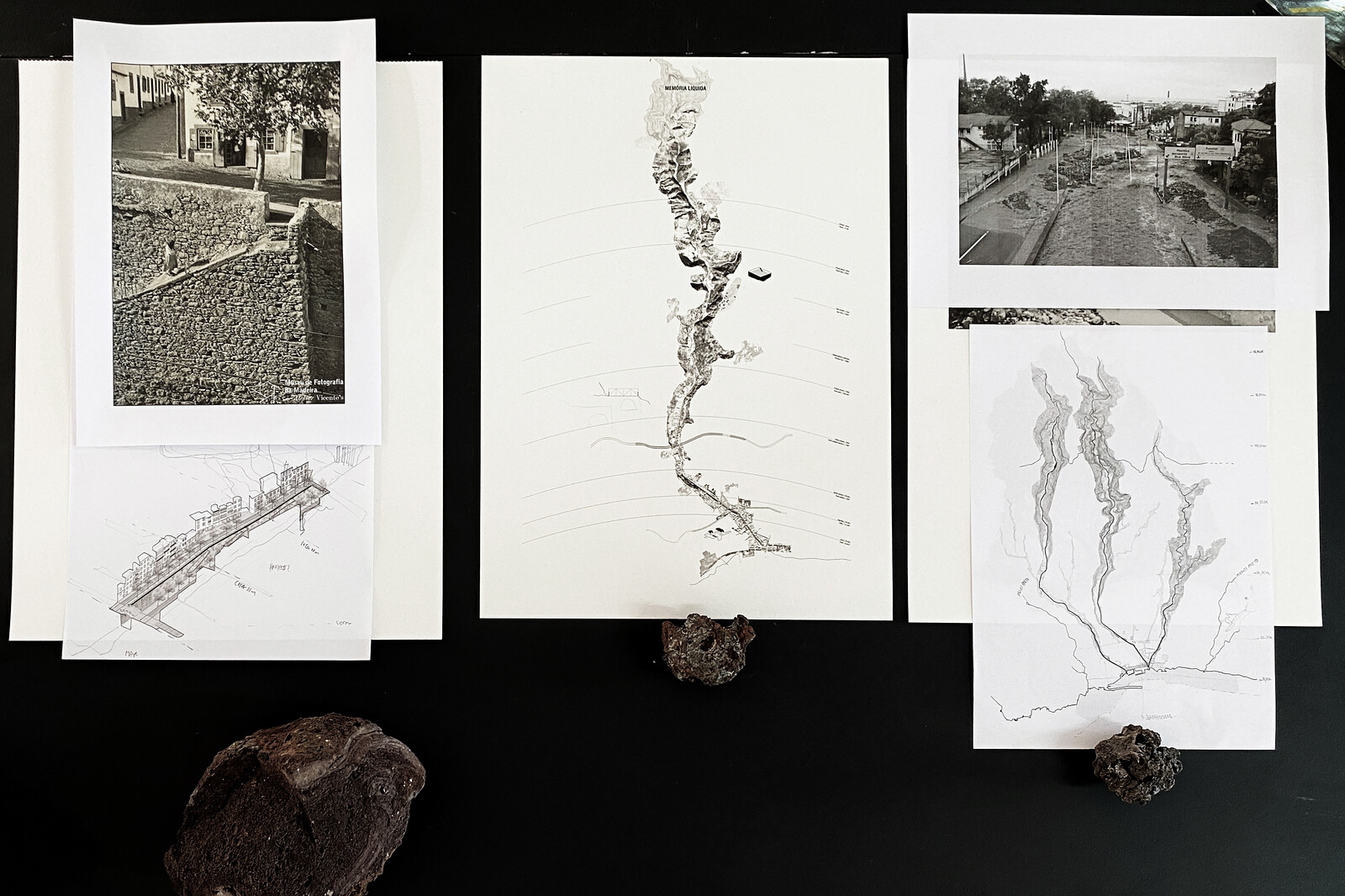We see it from across the Piave. Driving through the town of Longarone, I catch a glimpse of the concrete wall nestled within a narrow ravine on the other side of the valley.
Francesco, the Professor who is my guide, tells me that Longarone was destroyed. The new town built in its place in the 1960s is a center for the manufacture of ice cream and sunglasses.
The Piave river links the Dolomites to Venice, two UNESCO heritage sites with a new one in the middle: Prosecco. Due to the booming popularity of the sparkling wine, water and soil have been exploited in the vineyards that spread across the drought-affected hills downstream.
We drive through a tunnel excavated to access the dam’s control buildings, and then wind our way up on foot to Casso, a ghost village above. Its population was killed when at 10:39pm on October 9, 1963, 260 million cubic meters of mountainside descended from Monte Toc into the reservoir of the recently finished Vajont dam. A wave 250 meters high jumped over the concrete wall, devastating Casso, Longarone, and other towns downstream, killing at least 2,500 people.
From Casso, Francesco points down towards the ground behind the wall. Designed to be the tallest dam in the world, earth now fills the upstream side to 200 of the 260-meter-high wall. A new geology resulting from catastrophe, Francesco says that the filled-in reservoir has become “a laboratory of erosion, look at the layers of sediment along the side worn away since the 1960s.”
To mark the thirtieth anniversary of the catastrophe, the actor and director Marco Paolini—who hails from Belluno, a city south along the Piave—staged a televised piece of investigative theatre entitled “Vajont: 9 October 1963.” In the purpose-built theatre above the dam, Paolini asked his audience to imagine the weight of a cubic meter of water.


Photograph of a scale model of the Vajont dam at the Museo del Vajont. Photo: Ifor Duncan, November 2021.
Upstream, at the Erto Museum, there is a photograph of a scale model of the dam sculpted in clay. Photographed in studio isolation, the model looks like a tsunami wave. The elegance of its form acts as a strange premonition of the instability of Monte Toc; its long history of landslides studied but ignored by the dam’s surveyors. For the fathers of the dam, a masterpiece of Italy’s rapid post-war industrialization, Paolini stated that there is an eerie sense that the mountain collapsed, but the dam—sculpted to a morbid perfection—survived the ensuing landslide. Casting a great shadow into the ravine, Vajont now stands as a tomb to the megalomania of hydropower engineering.
Peering through the wire fence that encloses the walkway on top of the dam, it is impossible to see the bottom. Cold air rises from below as torrential sound draws your senses down. The feeling of vertigo and depth conjures the weight of all those cubic meters of water and mountain.
Lethe, Styx, Acheron, Phlegethon, Cocytus…
It would be impossible to name all the interlappings of water and death. Rivers have long been mythologized as the route to the underworld. In Greek mythology, to cross the waters of Lethe, Styx, Acheron, Phlegethon, and Cocytus, was to traverse the boundaries of life and death. Some of these rivers of the afterlife have real-world analogues; you can visit them. The meaning of these real/mythological rivers gains new weight, however, when they are not only the symbolic route into an afterlife beyond, but are the very medium of lethal conflict.
An element of paradox and contradiction: water navigates a fine balance between life-giving and life-taking. Communities, rural and urban, develop around and flourish with rivers. In turn, modes of control, extraction, and suppression organize around their flows.1 Rivers are dynamic and processual archives of political violence and devastating environmental policies.
Carrying their contents elsewhere, traces of conflict and contaminants flood and seep into fields, irrigation systems, and water supply. Thinking with Achille Mbembe, we can train a necropolitical lens onto water, to understand the varying ways it has become a key weapon “in our contemporary world… deployed in the interest of maximally destroying persons and creating death-worlds, that is, new and unique forms of social existence in which vast populations are subjected to living conditions that confer upon them the status of the living dead.”2
Hydrology is a vital space to intervene in the manifold forms of contemporary conflict and oppression. With the control of water in the service of large-scale extraction, it has become adversarial to life, producing a way of knowing and managing water at the transit zone between life and death—necro-hydrology.3


Horton’s hydrologic cycle. Robert E. Horton, “The Field, Scope, And Status of The Science of Hydrology,” Transactions of the American Geophysical Union, 1931, 193.
Necro-hydrology has some roots in the 1930s, when hydrologist Robert E. Horton pioneered an abstracted cycle that standardized the way water is known.4 Although the water cycle had been described before, Horton outlined hydrology as a pure science that accounts for “natural waters” in circulation, those of precipitation, transpiration, streamflow, evaporation, etc. But Horton’s hydrology did not account for “unnatural waters,” or “waters which have been temporarily removed from such circulation while so detained and used.” Those excluded from the discipline’s concerns included water that had been “impounded and distributed for potable use or waters utilized in industrial processes or waters of crystallization or hydration in nature.” In other words, water that has encountered or become entangled with human society. This emergent pure science was particularly concerned with preserving water as resource and held the belief that “non-use [was] waste.”5
This abstraction of water occurred at a moment when hydropower was rapidly expanding.6 Universalizing the division between “natural” and “unnatural” waters allowed it to become exploitable in ever increasing volumes. This has resulted in the proliferation of dam systems that transform entire river catchments like the Columbia River in Washington state, the Narmada in India, the Yangtze in China, or transboundary hydropower infrastructures on the Mekong, Nile, and Douro rivers into what have been called “organic machines” or “cyborg rivers.”7 Hydropower is an efficient source of energy production, but at the vast scale of the megadam it enfolds entire socio-cultural geographies and erases ongoing histories and politics. The ease by which dams and the waters in their reservoirs can be co-opted as weapons was further emphasized by Russia’s destruction of the Nova Kakhovska dam in June 2023 (after a previous strike on the dam in November 2022).8 Dams are not only technologies that transform ecosystems; they are infrastructures of conflict that convert water into a medium of war.


Fog, 2021. Photo: Ifor Duncan.
Necro-hydrology involves a set of processes and dynamics incorporated into the weaponization of water as part of the wider conflict waged by capital against those it makes poor. The distinction between “natural” and “unnatural” waters has facilitated wider social formations of inequality and violence whereby diffuse hydrological forms such as toxic rain, snow, fog, flood, drought, lowering reservoirs, dewatering, and the seeping contamination of grounds, muds, and drinkable water supply are made deadly rather than vital. The turn to perceive water’s all-pervasive relationality with human and multi-species bodies as a political and ethical imperative,9 or to think the world as constructed through water,10 provides a crucial lens onto the uneven embodiment of these entangled conditions. Literature in this area importantly centers hope, and also provides important entry points to follow the pervasiveness of the death-worlds produced in hydrologic registers.
A global phenomenon, necro-hydrology is locally defined. Orthodox forms of hydrologic knowledge that universalize or naturalize water as separate from human intervention have contributed to the conditions where rivers have become deadly border architectures and complicit in other forms of political violence, including the slower environmental devastation of river systems.11 The exclusion of the human from the hydrologic cycle reproduces liquid environments as abstract and naturalized alibis for the death of those frequently excluded from the category “human.”


Hidroituango Dead Fish. Credit: Alirio Uribe Muñoz (@AlirioUribeMunoz), February 6th 2019, Twitter.
Extracting the Food for Life
In February 2019, as the first operational stage of the Hidroituango megadam on the Cauca River in Colombia reached completion, its gates began to close. While downstream waters receded, images began to circulate of the dry riverbed pulsing with stranded, dying fish. Their scales thrashed against damp pebbles as children scrambled to catch them.12
Hidroituango is a highly controversial 225-meter-high embankment dam estimated to eventually produce between 13–20% of Colombia’s electricity needs. In May 2018, a partial failure of the incomplete dam led to flood waters cascading downstream, landslides, and the evacuation of more than 25,000 people. Despite known seismic activity and the risk of further disaster, including the displacement of thousands of people and the devastation of fish populations, Empresas Públicas de Medellín (EPM) closed the gates.13 The pressure of water accumulating behind the dam’s wall further raised the potential for landslides in the poorly surveyed and already unstable terrain, threatening catastrophic flooding for hundreds of miles downstream.
Long before the closing of the dam’s flood gates, the activist group Movimiento Ríos Vivos opposed the construction of the dam on four key points: first, Hidroituango’s environmental impact; second, the construction’s forced displacement of tens of thousands of people;14 third, the radical change provoked by the dam to the ways of life of communities living alongside the river; and fourth, the submergence of the sites, cemeteries, and remains of decades of paramilitary violence involving state collusion, including the massacres of June 1996 and October 1997 by the paramilitary United Self-Defense Forces of Colombia (AUC).15 It has been argued that these massacres were intended to spread fear and clear the territory near to the site of the proposed dam construction.16 Rivers, such as the Cauca, have been one of the prevailing methods of disappearance of the victims of the half-century long war in Colombia. The recovery and identification of those forcibly disappeared into the river and buried in its submerged banks near to the dam is now impossible.
Despite Colombia’s 2016 Peace Agreement with the FARC and the demobilization of the far-right paramilitary forces such as AUC in 2005, new illegal armies have emerged and directed their actions against grassroots movements and political organizations, including local river defenders. These newly formed groups often operate in the interests of local elites who seek to secure their investments, infrastructure projects, and financial interests through the silencing of political opposition. Such violence has included the ongoing intimidation and assassination of members of Rios Vivos, a group founded to preserve the life of rivers and who describe the development as “un proyecto de Muerte” (“a project of death”).17 The deaths of river defenders who oppose the construction Hidroituango and its ecologically devastating aftermath only reinforces the perpetuation of violence in the Cauca valley in the interest of hydropower.18
In April 2019, the office of then Attorney General Néstor Humberto Martínez Neira formed an interdisciplinary team to respond to the unfolding socio-environmental crisis.19 During a crucial moment in a press conference to announce a set of measures to secure the safety of the river, the attorney general called on an ichthyologist (a scientist specializing in the zoological study of fish) to describe an underwater film produced to document the river’s changing health. The Cauca is characterized by its highly turbid goldish waters that contain high amounts of iron resulting from soil erosion, as well as the suspended sediments and pollution from the industrial mining of gold, coal, and bauxite. The scientist claimed that, unlike the normal gold color of the water in the video taken above the dam, visibly teeming with tadpoles, the water downstream was clear; its nutrient-rich sediments filtered by the dam.20
Neira used this submerged footage to indicate the material politics of hydropower, articulating that with the loss of sediments “no hay alimientos para la vida” (“there is no longer the food for life”). In doing so, Neira made a connection between water quality and the existing socioeconomic practices of the valley, including fishing and small-scale artisanal gold mining. By blocking the transportation of sediments and minerals, the dam prevents the nutrients required to sustain fish populations, and the fishing communities that subsist on them, from flowing downstream. The clarity of water downstream is symptomatic of its transformation into a timeless, placeless, extractable substance.21 The image of turbid water, however, full of fertile nutrients, must be balanced against the threat of over-accumulating biomatter. Over-enriched with sediments, the water above the dam quickly became eutrophic. A carpet of water hyacinths grew rapidly across an area of 8.5 square-kilometers of the reservoir, further deoxygenating the water. The reservoir had become too thick with the food for life.
Hidroituango simultaneously attenuates and thickens the alluvial thresholds of life and death. Hydropower keeps the river in a controllable state to harness the power of its flows. In this socially exploitative and violent conversion of water into energy, the demand for electricity replaces the necessity of sustaining life. The extractive transformation of the Cauca folds together tens of thousands of gigawatt hours of energy with the devastation of the river’s ecosystem, the dispossession and displacement of tens of thousands of people, the history and present of paramilitary violence, and fear of the dam’s potential collapse. The entanglement of dead bodies disappeared within the river and dead fish on its banks shows hydropower to be an organizing force in the multi-species necro-hydrological order operating within the valley.
In the struggle against the dam, the rights of the living and the dead are at the mercy of the multiple parties wrestling for resources: the government, its subsidiary EPM, multinational funders, and paramilitaries. The dam fits into the drive for post-conflict development championed by the governments of Alvaro Uribe, Ivan Duque, and Juan Manuel Santos. As Hannah Meszaros Martin and Oscar Pedraza have shown, after more than half a century of war, the process of transitional justice since the 2016 peace accords has excluded the role of extractive industries, thus rendering “environmental violence in the context of war invisible.”22 Cases such as Hidroituango and many others, as Martin and Pedraza argue, show that bringing justice to “mass ecological destruction” necessitates a change in the understanding of what constitutes violence. Such questions are ongoing for the government of Gustavo Petro and its dual promises to end the environmental racism experienced by Black and Indigenous groups while achieving an energy transition that relies on inherited projects such as Hidroituango.
Megadams reduce rivers and valleys to places where all that can exist is the conversion of energy from the flow of water. In addition to processes that disappear, obfuscate, and enact violence, Hidroituango ruptures the connection between the Cauca and the people who live, work, and remember on its banks and amongst its flows. Within such spaces of extraction, human and multi-species life become surplus, a hinderance to the accumulation of profit and thus susceptible to violence.
As pervasive as water itself
The walls of Vajont and Hidroituango mirror each other across the temporality of past, present, and future disaster. Both harbor the loss of people, communities, and ecosystems at the price of hydropower capital. Since the 2019 press conference, Neira has been implicated in a major international corruption case involving the Brazilian construction giant Odebrecht, a builder of megadams. In such cases of performative environmentalism, agents of environmental devastation must be opposed in their search for absolution through environmental remediation, especially those where water is a medium of political violence.
Dams act as anchor points for a multitude of interlapping politics, but necro-hydrology is not the preserve of hydropower alone. Its processes are slow and diffuse; its impacts as pervasive as water itself. Today, the perishing of freshwater ecosystems abound: glaciers disappear; lakes evaporate and are dewatered; perennial rivers become intermittent and eventually dry year-round; unregulated extraction leads to toxic tailings entering water supply; irrigation systems collapse; saltwater encroaches further into estuaries and deltas; access to drinkable water is shrinking. These processes are the result of anthropogenic interventions and are a threat to life locally, regionally, and on a planetary scale.
The erosion of life through the watery world is slow and imperceptible for some, but acute for many. The imbrication of waters into political violence is not only a question of scalar extremes. Rivers are weaponized when floods are released by the intentional breaking of a levee or dam, or when a person is forced to cross as a means of necessity. In such cases, mud, temperature, turbulence, turbidity, submerged topography, vegetation, and inhabitants are all potentially lethal. Even a shallow, slow flowing section of river that may be considered a ford or a crossing point can be treacherous in the cold and dark when hunted at a border.23
To counter this, hydrology needs to be understood in its social frame, and water management in all its forms requires continual politicization. Resistance to the devastation of watery environments from groups such as Movimiento Ríos Vivos and others involves dedication to the inextricable deep correlation of water and community in the face of violence. It requires a steadfast attention to the absences of community produced through water’s abstraction. It also requires the celebration of existing and historic meaning, as well as future relations between people and water. Only then will the food for life be able to return.
See Jamie Linton and Jessica Budds’s concept of the hydro-social. Linton, Jamie, and Jessica Budds, “The Hydrosocial Cycle: Defining and Mobilizing a Relational-Dialectical Approach to Water,” Geoforum, 57 (2014) 170-180.
Achille Mbembe, Necropolitics, trans. Steven Corcoran (Durham NC: Duke University Press, 2019), 92. Italics in the original.
Ifor Duncan, “Hydrology of the Powerless.” Doctoral thesis, Goldsmiths, University of London (2021). See ➝.
Jamie Linton has called this modern water through his reading of Horton’s hydrologic cycle alongside the inception of the chemical formula H2O. Jamie Linton, What is Water: The History of a Modern Abstraction (Vancouver: University of British Columbia Press, 2010), 224. Jeremy Schmidt has elsewhere drawn on what he calls the production of “normal” water not so much as a product of modernity as Linton suggest, but as co-constitutive with it. Instead, he formulates normal water around the liberal project. Jeremy Schmidt, Water: Abundance, Scarcity, and Security in the Age of Humanity (New York: New York University Press, 2017).
Robert E. Horton, “The Field, Scope, And Status of The Science of Hydrology,” Transactions of the American Geophysical Union (1931), 190-1.
Linton, What is Water.
Richard White, The Organic Machine: The Remaking of the Columbia River (New York: Hill and Wang, 1995). Philip V. Scarpino, “The Organic Machine: The Remaking of the Columbia River,” Technology and Culture 40:2 (1996), 419-420.
Water has strategic importance in Russia’s invasion. After its annexation of Crimea in 2014, Ukraine blocked the North Crimean canal that diverted water from the Dnipro to irrigate rice fields in the peninsula. Since its 2022 invasion Russia has been able to reopen the canal. Jason Beaubien, “Russia has achieved at least 1 of its war goals: return Ukraine”s water to Crimea,” NPR, June 13, 2022. See ➝.
The work of Astrida Neimanis is influential here: Bodies of Water: Posthuman Feminist Phenomenology (London: Bloomsbury, 2017).
See Cecelia Chen; Janine MacLeod; & Astrida Neimanis, (eds.), Thinking With Water (Montreal: McGill-Queens University Press, 2013) as well as GIDEST, Anuradha Mathur and Dilip da Cunha - Wetness Everywhere. August 7, 2017. See ➝.
Derek Gregory, “(Post)Colonialism and the Production of Nature,” in Noel Castree ed., Social Nature: Theory, Practice and Politics (Malden MA: Blackwell, 2001) 84-111, 97; Vandana Shiva, Monocultures of the Mind, (London: Zed Books, 1993), 2.
For now, the dam is the last of its scale to be built in Colombia with popular opinion turning against major infrastructure projects that have been embroiled in corruption and fraught with ecological devastation.
EPM are a subsidiary company of the Medellín Mayoral government. Directors of Hidroituango have been investigated for not properly insuring the dam.
The Centre for International Environmental Law (CIEL), claim that the dam will have an impact on 180,000 people, with an estimated 700 families already being displaced. CIEL, 18 May, 2018, “Comment on Movimiento Ríos Vivos Antioquia”s Activism Regarding Hidroituango.”
Perpetrated by paramilitary groups with state collusion: Ituango Massacres v. Colombia, Inter-American Court of Human Rights (July 1 2006). See ➝.
Mariana Calvo, “How paramilitaries laid the foundation for Colombia”s largest hydroelectric dam,” Colombia Reports, March 2, 2020. See ➝.
Movimiento Ríos Vivos Colombia, “La vida está en riesgo con Hidroituango,” November 5, 2022. See ➝.
In March 2019, the Jurisdicción Especial Para la Paz (JEP), the body set up as part of the peace agreement between the Colombian Government and FARC to administer transitional justice in 2016, opened proceedings directed towards EPM, and the Governor of Antioquia regarding access to sites where the bodies of victims might be found (including Ituango). Jurisdicción Especial Para la Paz (JEP), “Avanzan actuaciones por solicitud de medidas cautelares de 16 lugares donde habría fosas con personas desaparecidas,” March 6, 2019. See ➝.
Fiscalía General de la Nación – Colombia, “‘¡Viva el Cauca!‘: la segunda fuente hídrica más importante del país,” YouTube (April 10, 2019), ➝.
The submerged recording is reminiscent of a scene in artist Carolina Caycedo”s film Yuma, or the Land of friends (2014) where she submerges her camera into the turbid waters of the Magdalena river. Macarena Gómez-Barris equates Caycedo”s appreciation of the visual and sonic spaces within the river to the production of an “anti-dam counter-logics” and “submerged perspective.” For the “subtlety and complexity” that hydropower tries to erase see Macarena Gómez-Barris”s conception of the extractive gaze and submerged perspectives. The Extractive Zone: Social Ecologies and Decolonial Perspectives (Duke University Press, 2017).
Linton (2010), 18.; Derek Gregory (2001), 97.; Dilip Da Cunha, The Invention of Rivers: Alexander”s Eye and Ganga”s Descent (Philadelphia: University of Pennsylvania Press, 2018), 12.; Vandana Shiva (1993), 2.
Hannah Meszaros Martin & Oscar Pedraza, “Extinction in transition: coca, coal, and the production of enmity in Colombia”s post-peace accords environment,” Political Ecology 28 (2021): 721-740, 723.
Ifor Duncan and Stefanos Levidis, “Weaponizing a River,” e-flux Architecture, 2020. See ➝.
Hydroreflexivity is a collaboration between e-flux Architecture and “Fertile Futures,” the Portuguese Pavilion at the 18th International Architecture Exhibition, La Biennale di Venezia curated by Andreia Garcia with Ana Neiva and Diogo Aguiar.
Category
Subject
Acknowledgements: I am grateful to my guide Professor Francesco Vallerani, the attentive reading of Nick Axel, Hannah Meszaros Martin, Oscar Pedraza, Nile Davies, Daniel Mann, Stefanos Levidis, and the artist Carolina Caycedo with whom I had a conversation many years ago about Hidroituango
